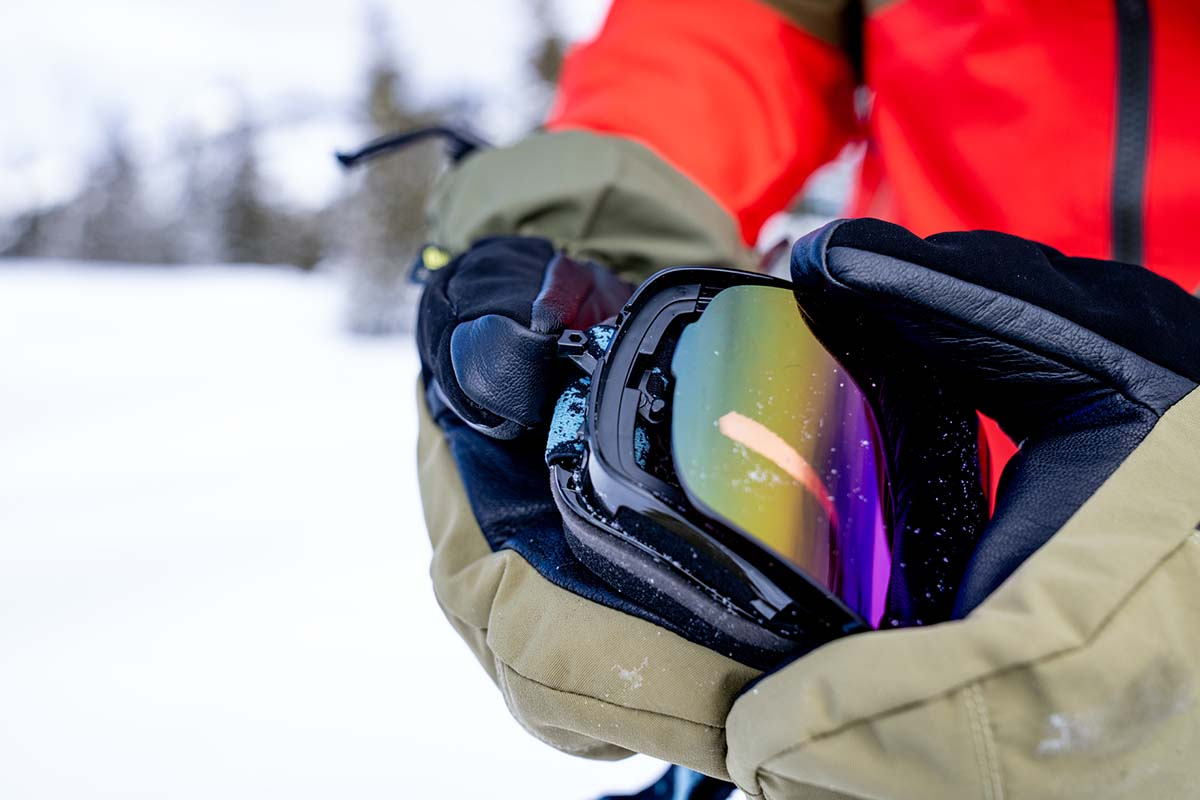 Snow gloves and ski gloves are essential for outdoor activities. They may seem simple, but there’s more to them than meets the eye. If you choose or use gloves improperly, you’ll experience an unprecedented chill, with icy hands and numb fingers completely ruining your extreme sports experience.
Snow gloves and ski gloves are essential for outdoor activities. They may seem simple, but there’s more to them than meets the eye. If you choose or use gloves improperly, you’ll experience an unprecedented chill, with icy hands and numb fingers completely ruining your extreme sports experience.
So, which type of glove is the best or most suitable for your needs?
Gloves vs Mittens
First, before buying a new pair of gloves, the first question you should consider is: which type should you choose?
Generally, mittens are warmer than gloves because all your fingers share one compartment, naturally generating more heat compared to separated finger slots.
However, every design has its pros and cons. Due to this design, mittens are less flexible than gloves, making simple activities like adjusting your goggles or answering a phone call more challenging.
Warmth
Although mittens are generally warmer than gloves, it’s hard to definitively decide based solely on weather conditions—it depends on your personal needs.
Simply put, if you’re skiing in milder conditions, you may not need highly insulated gloves. You can opt for less warm ones if you don’t get cold easily. However, if you tend to feel cold, then well-insulated gloves will undoubtedly be the best choice for you.
The warmth of gloves depends on the type of materials used, the insulation type, and the waterproof and moisture-wicking properties of the glove lining.
Glove Materials
Synthetic Fibers
Synthetic fibers are a widely recognized glove material, produced through chemical processes. They are commonly used in ski gloves and other outdoor sports gloves.
Gloves made of synthetic fibers usually have excellent durability. Materials like nylon, polyester, and spandex can withstand frequent friction and use. They also offer good waterproofing, keeping you warm in cold conditions with strong insulation and breathability.
Compared to other glove materials, they are easier to clean and maintain. Additionally, synthetic fibers can be combined with other materials to further enhance glove performance.
Leather
Leather is typically considered a high-end glove material, with cowhide and goatskin being most commonly used in outdoor sports. Compared to synthetic fiber gloves, leather gloves are more durable, softer, and naturally waterproof. They offer windproofing, warmth, and require regular maintenance.
Insulated Gloves
Insulated gloves are specifically designed to protect hands from extreme cold or heat. In outdoor sports like skiing, these gloves effectively retain warmth and prevent frostbite. They often feature a multi-layer structure to ensure durability, while also offering additional mechanical protection like impact resistance and cut protection.
Lining
The glove lining is the inner layer that directly contacts your hands. It provides extra warmth and comfort while offering additional protection if the outer layer is damaged. Linings can be made from various materials, commonly wool, fleece, or synthetic fibers.
Palm
The palm design of the glove is crucial for functionality and comfort. Special grips and reinforced areas are often added to enhance grip strength, durability, and flexibility in the most-used regions.
Features
Cuff Length
The choice of cuff length for snow gloves depends on your preference for gloves or mittens. The primary function of the cuff is to prevent snow from entering the gloves and jacket.
Zipper Pockets
Zipper pockets in snow gloves are typically used to store small items but can also serve as vents to maintain hand comfort.
Wrist Guards
Wrist guards are protective tools designed to prevent wrist injuries during extreme sports and to absorb impacts during falls.
Size and Fit
Choosing the right size and fit is crucial to protecting your hands during outdoor activities. Properly fitting snow gloves offer better dexterity, warmth, and comfort. Gloves that are too large, small, long, or short can cause unnecessary trouble. For the best results, gloves should fit snugly without restricting finger movement when making a fist.
Conclusion
The key to buying the right snow gloves is understanding your needs and selecting gloves that best fit your hand size. Of course, quality is also important. With 20 years of experience in glove manufacturing, Aibon can meet your needs for any type of glove. Trust us—if you’re interested in purchasing snow gloves, please contact us as soon as possible.
How to Measure Glove Sizes – Source: AIBON
Latex gloves– Source: AIBON
Safety gloves– Source: AIBON
Working gloves– Source: AIBON

